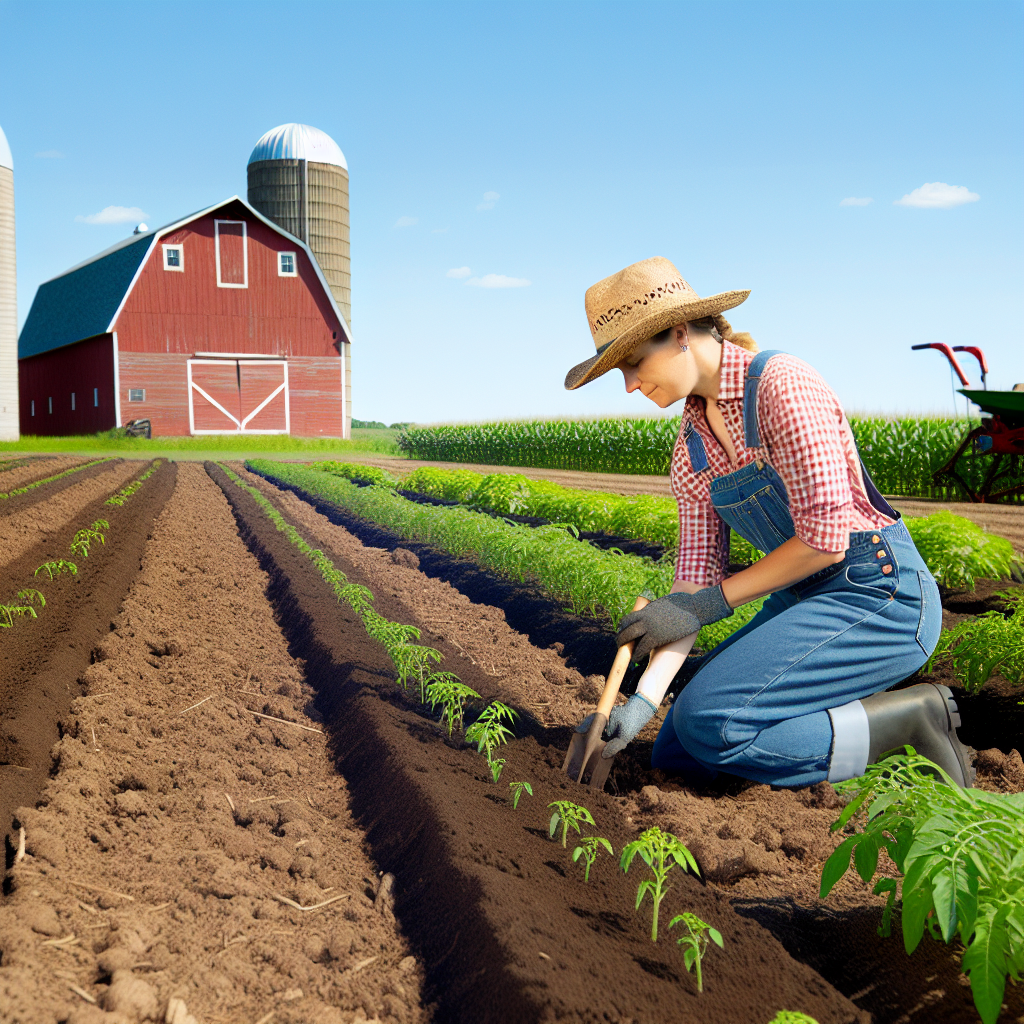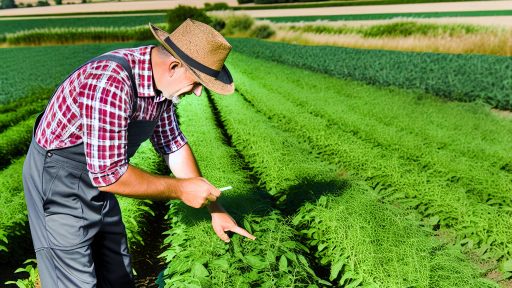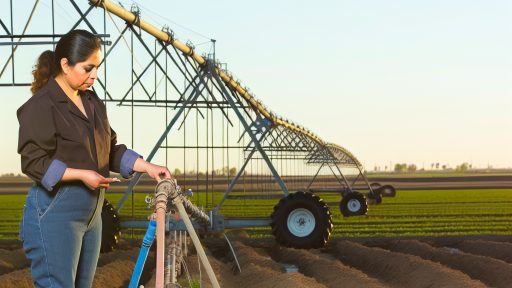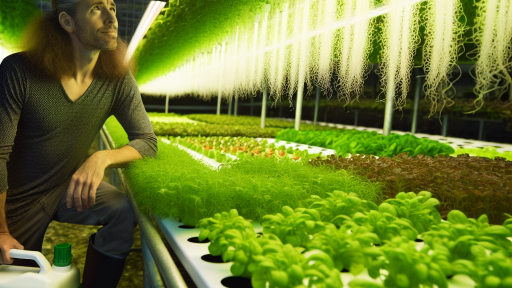Introduction to Crop Diversity and Its Importance in Sustainable Farming
Defining Crop Diversity
Crop diversity refers to the variety of different plants grown for food and agriculture.
It includes both cultivated crops and their wild relatives.
This diversity plays a critical role in sustaining agricultural systems.
The Benefits of Crop Diversity
Crop diversity enhances ecosystem resilience.
Diverse crops can better withstand pests and diseases.
Moreover, it leads to improved soil health and fertility.
Additionally, varied crop systems result in more balanced nutrient use.
Supporting Sustainable Farming Practices
Implementing crop diversity promotes sustainable farming methods.
It reduces reliance on chemical inputs and synthetic fertilizers.
As a result, this practice minimizes environmental impacts.
Furthermore, it can increase farm profitability through diversified income sources.
Adapting to Climate Change
Crop diversity is essential for adapting to climate variability.
Diverse crops can thrive under changing weather conditions.
This adaptability ensures food security in uncertain climates.
Finally, it supports agricultural communities in facing climate challenges.
Transform Your Agribusiness
Unlock your farm's potential with expert advice tailored to your needs. Get actionable steps that drive real results.
Get StartedPromoting Biodiversity on Farms
Incorporating various crops fosters a richer ecosystem.
This approach invites more beneficial insects and wildlife.
Consequently, it improves pollination and natural pest control.
Thus, biodiversity becomes a key element in sustainable agriculture.
Benefits of Crop Diversity for Soil Health and Nutrient Management
Enhancing Soil Structure
Crop diversity significantly enhances soil structure.
Different root systems improve soil aeration.
Additionally, varied root depths optimize nutrient uptake.
This results in healthier, more resilient soil.
Promoting Beneficial Microorganisms
Diverse crops foster a rich microbial community.
Microorganisms play a crucial role in nutrient cycling.
For instance, legumes enrich the soil with nitrogen.
This improves soil fertility and plant health.
Reducing Soil Erosion
Crop diversity effectively combats soil erosion.
Different plants protect the soil with varying root systems.
Cover crops can enhance soil coverage during off-seasons.
This minimizes the impact of wind and water erosion.
Improving Nutrient Management
Growing multiple crops aids in nutrient management.
Different plants have unique nutrient requirements.
Some crops even release natural fertilizers into the soil.
This promotes balanced nutrient levels for all plants.
Mitigating Pest and Disease Pressure
Crop diversity reduces pest and disease outbreaks.
Pests struggle to adapt to varied plant species.
Consequently, farmers see fewer crop failures.
This ensures stable yields across diverse farm environments.
Showcase Your Farming Business
Publish your professional farming services profile on our blog for a one-time fee of $200 and reach a dedicated audience of farmers and agribusiness owners.
Publish Your ProfileEnhancing Resilience to Climate Change
Diverse crop systems are more resilient to climate changes.
They adapt better to extreme weather events.
This flexibility helps maintain consistent harvests.
Farmers face less risk of total crop failure.
Strategies for Implementing Crop Diversity on Farms
Crop Rotation
Crop rotation involves changing crops in a specific sequence on the same land.
This technique promotes soil health by preventing nutrient depletion.
It disrupts pest and disease cycles that affect monocropped fields.
Farmers can enhance biodiversity by incorporating different plant families.
Additionally, crop rotation can improve yields over time.
For instance, rotating legumes with cereals enriches nitrogen levels in soil.
Effective planning is vital for successful crop rotation.
Farmers can create a rotation schedule tailored to their specific conditions.
This schedule should consider climate, soil type, and pest histories.
Intercropping
Intercropping involves planting two or more crops in proximity.
This practice maximizes land use and minimizes pest populations.
It encourages complementary relationships between plants, enhancing growth patterns.
An example is pairing corn with beans, where beans fix nitrogen for corn.
Additionally, intercropping can boost overall yields significantly.
Farmers should select crops that benefit from each other’s presence.
These crops can vary in height, nutrient needs, and growth rates.
Monitoring is essential to ensure crops thrive together.
Farmers can adjust planting strategies based on observing interactions.
Explore Further: Conservation Tillage Strategies For Crop Success
Case Studies: Successful Implementation of Crop Diversity in Various Farming Systems
Crop Rotation in Midwest Farms
Midwest farmers have embraced crop rotation for sustainable practices.
This method improves soil health and increases yields.
For instance, the Smith family farm rotates corn and soybeans annually.
Implementing this approach has significantly reduced pest populations.
Additionally, they have noticed a boost in soil nutrients.
This success demonstrates the benefits of diverse crops in their system.
Intercropping Techniques in Organic Farms
Organic farms in California have adopted intercropping techniques.
This method involves growing different crops in proximity.
The Garcia Organic Farm utilizes tomatoes and basil together.
By doing this, they enhance pest control and improve flavor.
The crops provide mutual benefits, which improves overall yield.
Consequently, they maintain high standards of organic certification.
Agroforestry in Tropical Regions
In tropical regions, agroforestry has gained traction among farmers.
This practice integrates trees with crops and livestock.
The Kumar family in India cultivates mangoes alongside cassava.
This pairing reduces soil erosion and enhances microclimates.
Moreover, it provides additional income from timber and fruit.
Showcase Your Farming Business
Publish your professional farming services profile on our blog for a one-time fee of $200 and reach a dedicated audience of farmers and agribusiness owners.
Publish Your ProfileAgroforestry exemplifies how diverse systems can yield multiple benefits.
Community Supported Agriculture (CSA) Initiatives
CSAs in Vermont encourage local crop diversity among farmers.
These farms deliver a variety of seasonal produce to members.
The Maple Lane Farm operates a successful CSA model.
They grow more than 30 different crops each season.
This strategy diversifies income and strengthens community ties.
It effectively showcases the advantages of planting diverse crops.
Lessons from International Practices
Farmers globally are successfully implementing diverse cropping systems.
In Brazil, the family-run Silva Farm grows coffee and bananas together.
This combination enhances biodiversity and soil resilience.
Farmers in Kenya incorporate legumes with main crops, improving nitrogen levels.
Such examples illustrate how different cultures adapt to their environments.
These lessons create valuable insights for sustainable farming practices.
Uncover the Details: Enhancing Farm Efficiency with Waste Management
The Role of Agroecology in Promoting Crop Diversity and Resilience
Understanding Agroecology
Agroecology integrates principles of ecology into agricultural practices.
It fosters sustainable farming methods that enhance biodiversity.
This approach prioritizes ecological health over industrial methods.
Consequently, it promotes a balanced ecosystem for crops and wildlife.
Enhancing Crop Diversity
Crop diversity improves resilience against pests and diseases.
It reduces the risk of complete crop failure during climate extremes.
Farmers can select a variety of crops suited to local conditions.
Moreover, diverse crops can enhance soil health and fertility.
This diversity contributes to better nutritional security for communities.
Building Resilience in Farming Systems
Agroecology helps in building resilience through ecological practices.
Cover cropping and intercropping are effective strategies.
These practices can minimize erosion and improve water retention.
By diversifying crop systems, farmers curve vulnerability to market fluctuations.
Implementing Agroecological Practices
Farmers can adopt several agroecological practices to promote diversity.
- Utilizing native crops that are well-adapted to local conditions.
- Employing crop rotation to disrupt pest cycles.
- Incorporating agroforestry systems for additional biodiversity.
Such strategies foster sustainable and resilient farming ecosystems.
Community and Knowledge Sharing
Engaging local communities promotes knowledge-sharing and collaboration.
Farmers can exchange experiences and learn about new practices.
This collective learning enhances the effectiveness of agroecological methods.
Community-supported agriculture can also support local economies.
Find Out More: Crop Rotation Methods to Enhance Farm Sustainability

Challenges and Barriers to Implementing Crop Diversity in Farming Practices
Understanding Economic Constraints
Many farmers face financial challenges when diversifying crops.
High initial costs often deter them from trying new crops.
Additionally, market access poses problems for less common crops.
Farmers worry about price volatility and uncertain returns.
Cultural and Knowledge Barriers
A lack of knowledge can hinder the adoption of crop diversity.
Many farmers stick to traditional methods out of habit.
Showcase Your Farming Business
Publish your professional farming services profile on our blog for a one-time fee of $200 and reach a dedicated audience of farmers and agribusiness owners.
Publish Your ProfileEducational resources on diversified cropping are often limited.
Furthermore, peer pressure can stifle innovative practices.
Policy Limitations
Current agricultural policies often favor monoculture farming.
Subsidies tend to support a handful of major crops.
This creates an uneven playing field for diverse crop growers.
Moreover, regulations can complicate the introduction of new crops.
Environmental Factors
Some regions face unsuitable conditions for diverse crops.
Climate variability complicates planning for crop rotations.
Weather extremes can discourage farmers from trying new types.
Soil health issues may also limit crop variety options.
Infrastructure Challenges
Inadequate infrastructure can impede crop diversity efforts.
Poor access to transportation affects marketability of diverse crops.
Storage facilities may not accommodate varied harvests effectively.
Furthermore, limited funding for research hampers innovation.
You Might Also Like: Organic Farming Methods To Improve Soil Health
Economic Impacts of Crop Diversity
Cost-Benefit Analysis for Farmers
Farmers can greatly benefit from implementing crop diversity strategies.
Such strategies enhance resilience against pests and diseases.
They also improve soil health and fertility over time.
This section explores the financial implications of crop diversity.
Initial Investment and Setup Costs
Transitioning to a diverse crop system requires an initial investment.
Farmers may need to purchase new seeds and equipment.
Additionally, training on new cultivation techniques might be necessary.
These upfront costs can be a barrier for some farmers.
Long-Term Economic Benefits
Over time, crop diversity leads to enhanced yield stability.
For instance, diverse crops can reduce reliance on single crop yields.
As a result, farmers experience less financial volatility.
Diverse cropping systems can also open new market opportunities.
Farmers can sell a variety of products to different consumer bases.
Environmental and Societal Advantages
Financial savings come from lower pesticide and fertilizer usage.
Crop diversity reduces overall ecological impact.
Healthy ecosystems support greater pollinator populations.
Additionally, strong ecosystems contribute to local tourism and recreation.
Ultimately, these factors can lead to better community well-being.
Examples from Successful Farmers
Many farmers report increased profitability through crop diversity.
For example, Maria Lopez in Oregon diversified her crop portfolio.
She found that growing mixed vegetables improved her income stability.
Similarly, Tom Green in California reduced his risks by intercropping.
His diversified fields yielded higher overall profits.
Significant Economic Advantages of Crop Diversity
Implementing crop diversity delivers both short and long-term economic benefits.
Farmers can mitigate risks while supporting the environment.
Showcase Your Farming Business
Publish your professional farming services profile on our blog for a one-time fee of $200 and reach a dedicated audience of farmers and agribusiness owners.
Publish Your ProfileCrop diversity emerges as a sustainable farming strategy with significant economic advantages.
Future Trends: Innovations and Technologies Supporting Crop Diversity in Agriculture
Biotechnology Advancements
Biotechnology plays a vital role in enhancing crop diversity.
Scientists develop new strains using precision breeding techniques.
These methods increase resilience against pests and diseases.
Moreover, they can enhance nutritional content in crops.
Digital Farming Technologies
Digital technologies are transforming agriculture practices today.
Farmers utilize data analytics to make informed decisions.
Farm management software helps track crop performance efficiently.
Remote sensing technology provides insights into crop health.
Integrated Pest Management
Integrated Pest Management (IPM) supports crop diversity effectively.
IPM combines biological, cultural, and chemical controls.
This approach reduces reliance on synthetic pesticides.
It fosters ecosystems that support beneficial insects.
Vertical Farming Innovations
Vertical farming systems contribute significantly to crop diversity.
They enable crop production in urban settings.
This method maximizes land use while minimizing water consumption.
Additionally, it allows for year-round crop cultivation.
Sustainable Practices in Seed Production
Sustainable seed production ensures a diverse genetic resource base.
Farmers breed seeds that are adaptable to local environments.
This promotes resilience against climate change effects.
Furthermore, it encourages the preservation of heirloom varieties.
Community Engagement and Education
Community initiatives foster crop diversity awareness among farmers.
Workshops and seminars educate about sustainable practices.
Collaborative efforts strengthen local seed-saving programs.
By sharing knowledge, they enhance overall agricultural productivity.




